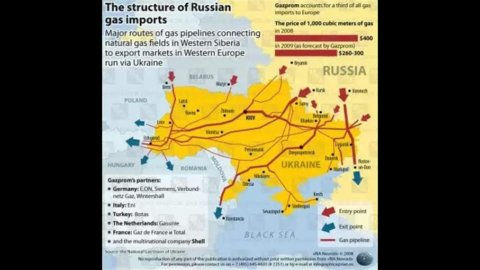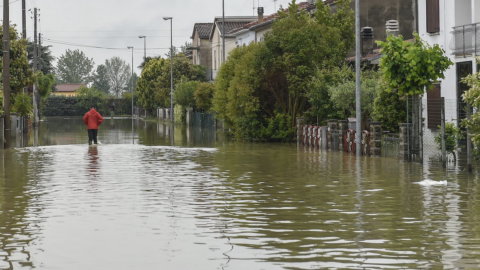From the data presented in focus of the Intesa Sanpaolo Studies and Research Service of December, it appears that the Ukrainian economy recorded a sharp slowdown during this year, reporting the first trend decline (-1,3%) since 2009 and setting the GDP growth rate at 1%. The worst performances concern the agricultural sector (-4,5%), due to the latter summer crops of cereals, legumes, beets and sunflower seeds, construction and manufacturing. The same metalworking, the main industrial activity (19,4%) and particularly sensitive to the situation of the main export markets (EU and Russia), recorded a contraction of 4,5%. There was also a marked decline in refining (-25,6%), the production of electronic products (-10,8%), machinery and plants (-10,3%), while chemicals (+9,5%), public utilities (5,1%), vehicle production (+2,5%) and mining (+2,8%) were at good levels.
The Ukrainian economy is very open, the sum of trade flows amounts to almost 120% of the GDP, where the CIS countries absorb over a third of exports, Europe and Asia a quarter each, but have a high vulnerability to external shocks. This can be seen with reference toexposure to markets of metal semi-finished products and agricultural products on the export side, and of energy goods, especially gas, on the import side. Indeed, Ukraine has asked the Russia the renegotiation of the agreement signed in 2009 to obtain a lower price and a reduction in imported quantities, which would lead to savings of approximately 6 billion dollars. A positive outcome of these requests would help the country to achieve a recovery of the financial support from the IMF, now at a standstill due to state subsidies granted to the energy company Naftogaz to be able to sell gas below cost. In fact, about 80% of the Russian gas bound for Europe: the opening of new transit routes for gas, such as the North Stream in the Baltic, which is already operational, and the South Stream, through the Black Sea, which is expected to be completed in 2015, risk, in the short term, making Ukrainian pipelines less attractive and costing in terms of commissions. However, gas demand in Europe is expected to increase by around 40% over the next ten years, which would ensure medium-term Ukrainian profits.
From a financial point of view, foreign exchange reserves offer a low coverage of external financial needs, causing a decrease in the inflow of funds and productive investments, thus aggravating the budget deficit. From January to August 2012, the government deficit nearly doubled to $8,2 billion, while the trade deficit rose from $9,5 billion to $12,6 billion as a result of falling metal exports and rising imports of machinery and plants. While the foreign debt, equal to almost 128,9 billion dollars at the end of June, presents a high percentage of GDP (about 80%), 60% of which generated by the non-banking private sector.
In this context, the financial position vis-à-vis foreign countries presents major inefficiencies, above all due to the currency loans which are reflected in the budget deficit. The low level of foreign exchange reserves, when compared with foreign financing commitments, exposes the medium-long term economic dynamics to changes in risk appetite on the capital market. Not surprisingly, major rating agencies have rated Ukraine's sovereign debt a highly speculative investment. This perspective, in the absence of one new business strategy, today still extremely vulnerable to fluctuations in hydrocarbon prices, political pressures and climate change, could jeopardize the country's growth and development for a long time to come.





